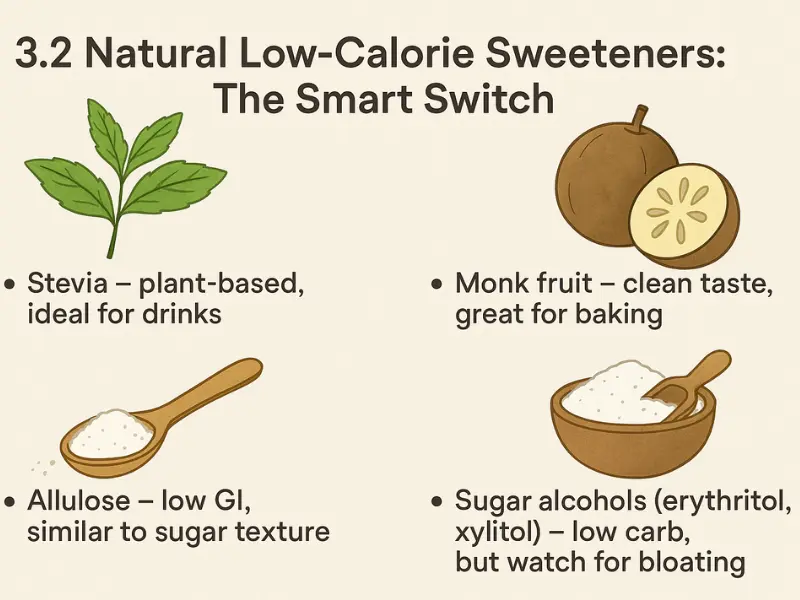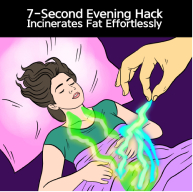Why Sugar Reduction Is the Health Revolution Every Woman Over 35 Needs
As women enter their mid-30s and beyond, hormonal shifts, stress, and metabolic slowdown begin to show themselves—not always in subtle ways. Fatigue, weight gain around the belly, mood fluctuations, sugar cravings, disrupted sleep, and more. While many women blame age, hormones, or genetics, there’s one deeply underestimated culprit behind these symptoms: excess sugar.
This blog isn’t just another food trend manifesto. It’s a life-changing guide to how reducing your sugar intake—without depriving yourself—can transform your health, energy, and confidence. Especially if you’re navigating perimenopause, this could be the nutritional reset your body has been craving.
1. Understanding the Impact of Sugar on Women’s Health After 35
1.1 Hormones and Sugar: A Delicate Dance
During perimenopause, estrogen and progesterone fluctuate wildly. These hormones interact closely with insulin, the hormone that regulates blood sugar.
- Insulin resistance increases
- Blood sugar spikes and crashes
- Cravings intensify
- Fat storage increases
- Mood swings and irritability become more common
By reducing sugar, you help regulate insulin, which supports more balanced estrogen levels, stabilizes energy, and reduces inflammation.
1.2 Midlife Metabolism and Sugar Storage
As metabolism slows, excess sugar gets stored as fat, especially around the abdomen. This type of fat is linked to:
- Cardiovascular disease
- Type 2 diabetes
- Hormone-related cancers
- Cognitive decline
A low sugar diet reduces the metabolic load and encourages fat burning.
2. 7 Proven Benefits of Reducing Sugar Intake
2.1 Boost Heart Health
High-sugar diets increase risk of heart attacks and strokes by raising triglycerides and blood pressure.
2.2 Prevent Type 2 Diabetes and Insulin Resistance
Excess sugar stresses the pancreas, leading to insulin resistance. Cutting sugar maintains insulin sensitivity.
2.3 Improve Liver Health
Too much fructose leads to non-alcoholic fatty liver disease (NAFLD). Reducing sugar supports liver function.
2.4 Protect Brain Function and Mental Clarity
Less sugar = better memory, clearer thinking, and lower dementia risk.
2.5 Enhance Dental and Bone Health
Sugar creates acidity, which harms teeth and weakens bones.
2.6 Support Gut and Immune Health
Lower sugar supports a healthy microbiome, boosting digestion and immunity.
2.7 Facilitate Weight Loss—Especially Belly Fat
Reducing sugar curbs insulin spikes and promotes fat loss, especially around the abdomen.
3. Decoding Sugar: Not All Sweeteners Are the Same
3.1 Artificial Sweeteners: Friend or Foe?
Pros:
- Zero calories
- Don’t raise blood sugar
Cons:
- May disrupt gut bacteria
- Increase cravings
- Potential health concerns
3.2 Natural Low-Calorie Sweeteners: The Smart Switch

- Stevia – plant-based, ideal for drinks
- Monk fruit – clean taste, great for baking
- Allulose – low GI, similar to sugar texture
- Sugar alcohols (erythritol, xylitol) – low carb, but watch for bloating
Tip: Use stevia or monk fruit in coffee, smoothies, or baking for best taste and health.
4. Hidden Sugars in “Healthy” Foods: What to Watch For
Surprising high-sugar items:
- Flavored yogurts
- Granola bars
- Nut butters
- Salad dressings
- Pasta sauces and condiments
Check labels and avoid ingredients ending in “-ose” or “syrup”. Stay under 6g added sugar per serving.
5. The Psychology of Sugar: Why You Crave It and How to Stop
5.1 Sugar’s Grip on the Brain
Sugar triggers dopamine, reinforcing cravings. Stress and low mood worsen this cycle.
5.2 Emotional Triggers
- Comfort eating
- Reward behavior
- Celebration culture
5.3 How to Break the Cycle
- Eat more protein and healthy fats
- Delay the craving by 10 mins
- Replace sugary snacks with fruit, nuts, or tea
- Track triggers in a journal
6. Building a Low-Sugar Lifestyle That Feels Good
6.1 Start Gradually
- Week 1: Remove soda and juice
- Week 2: Fix breakfast habits
- Week 3: Add natural sweeteners
- Week 4: Cook low sugar desserts
6.2 Pantry Essentials
- Stevia, monk fruit, cinnamon, vanilla
- Chia, flax, leafy greens
- Avocado, olive oil, seeds
6.3 Example Low-Sugar Meals
| Meal | Option |
|---|---|
| Breakfast | Eggs + spinach + berries |
| Lunch | Chicken salad with avocado |
| Snack | Apple + almond butter |
| Dinner | Salmon + broccoli + cauliflower mash |
| Dessert | Coconut chia pudding |

7. FAQs: Low-Sugar Living After 35
Yes – stick to low-glycemic fruits like berries and grapefruit.
Absolutely. Use smart substitutes and mindful portions.
Maybe at first, but after 7–14 days, expect more energy and better mood stability.
Start with yourself. Most will follow once they see your results.
8. Conclusion: Your Low-Sugar Journey Starts Now
This isn’t about restriction—it’s about reconnection. A low sugar diet is a path to clarity, vitality, and balance. You don’t need to be perfect. You just need to begin.







